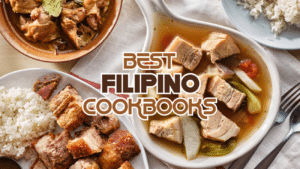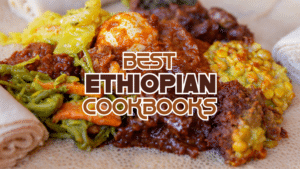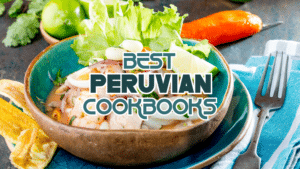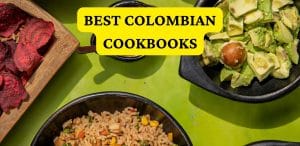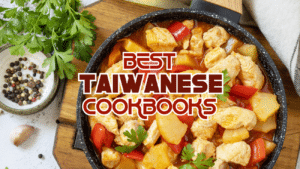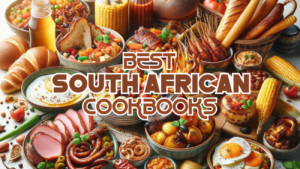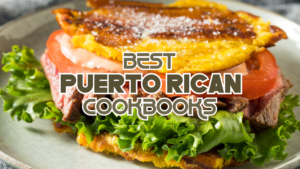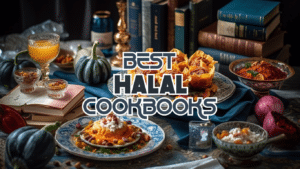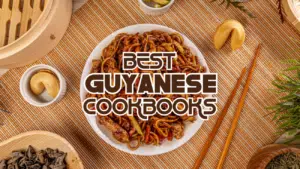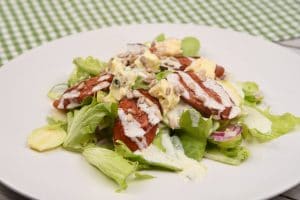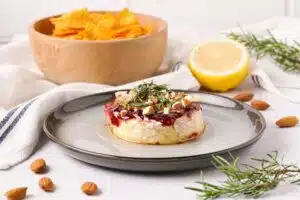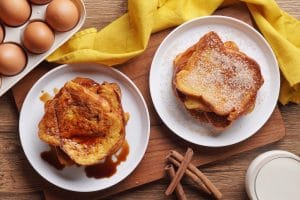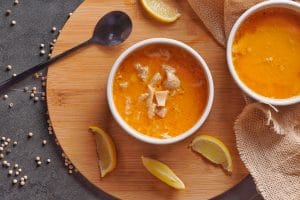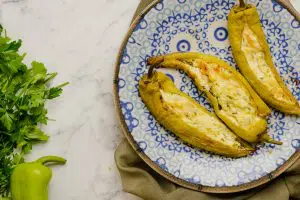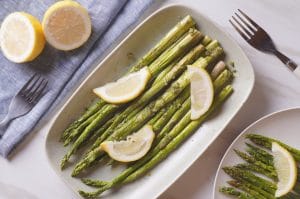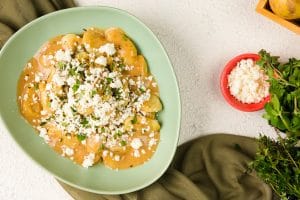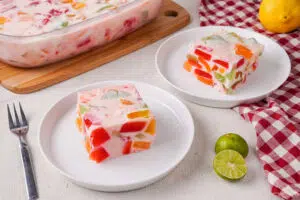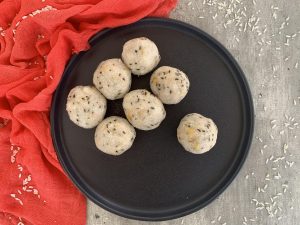Best Indigenous Cookbooks
Important Note: When you buy through our links, we may earn a commission. As an Amazon Associate we earn from qualifying purchases. Content, pricing, offers and availability are subject to change at any time - more info.
Rooted in ancient traditions and deeply connected to the land, indigenous foodways are a reflection of cultural identity and resilience. These culinary practices encompass sustainable harvesting methods, traditional cultivation, and unique preparation techniques passed down generationally. The selection of ingredients often holds sacred significance and relies on the land, while the diet itself comes with its own inherent health benefits. Every indigenous culture has its own culinary secrets to share. We’ve reviewed all the best indigenous cookbooks. All facets of society are covered. Native American, indigenous Mexican, Mayan, Guatemalan, Peruvian, Pueblo, First Nations Australian, aboriginal, Maori, Basque, Tibetan Kurdish, the indigenous Chinese ethnicity Yunnan, African and even Arctic cookbooks are all there.
Key Takeaways
- Unless you live in a region where wild foraging of the appropriate ingredients in question is possible, it will be tricky to replicate authentic indigenous cooking from certain parts of the world. Foraging and hunting just aren’t possible everywhere. Fortunately, there are reputable ethnic markets readily available online for everything from non-perishables to fresh vegetables, meat and seafood.
- Cooking indigenous food at home provides a deeper understanding and appreciation of the culture from which the food originates. It’s usually more cost effective than eating out and cooking different types of cuisine is a surefire way to develop a wide range of cooking skills and techniques while expanding the complexity of your palate at the same time.
We’ve reviewed indigenous cookbooks from societies from all around the world. Between Indigenous North American, South American, Pacific, Eurasian, African, and Arctic, every continent is covered, opening up a world of new flavors and techniques to discover. For many of these recipes, cooks will have to source ingredients that aren’t readily available at Western grocery stores. Our guide entitled ‘Where To Buy Exotic Meat Online?’ is a great place to start, while ethnic markets matched to the nationality in question will be sure to keep the rest of the ingredients you need. For authenticity and a true taste of what’s intended by indigenous people from around the world, there’s no room for substitutions. It’s worth it.
- Key Takeaways
- Indigenous North American Cookbooks
- Indigenous South American Cookbooks
- Indigenous Pacific Cookbooks
- Indigenous Eurasian Cookbooks
- Indigenous African Cookbooks
- Indigenous Arctic Cookbooks
- Frequently Asked Questions – Best Indigenous Cookbooks
Indigenous North American Cookbooks
From wild foraging secrets to time-honored cooking techniques, these indigenous American cookbooks offer a complete look at Native American and indigenous Mexican cuisine. There’s no better way to understand the profound story of resilience, culture, and the bountiful traditions woven into the landscapes of North America.
The Sioux Chef’s Indigenous Kitchen By Sean Sherman
- Ethnicity: Native American
- Total Pages: 236
- Total Recipes: Unspecified
- Recipes Preview: Cedar Braised Bison, Griddled Wild Rice Cakes, Amaranth Crackers With Smoked White Bean Paste
- The Best Recipe We Wanted To Try: Wild Rice Pilaf With Wild Mushrooms, Roasted Chestnuts, And Dried Cranberries
- Affordability: Moderate
The Sioux Chef’s Indigenous Kitchen is a treasured cookbook written by an Oglala Lakota, and the authenticity shines clear through each and every word. The book leans heavily on the author’s in-depth knowledge of North American wild foods, preservation methods, and elemental culinary techniques. If you’re looking to understand the history behind Native American cuisine, this is the perfect cookbook. Whether you’re searching for cultural insights or flavorful recipes that make the most out of ingredients like game and organic vegetables, this gorgeous cookbook is sure to overdeliver. There’s something for everyone, from beginners to professional chefs and even seasoned indigenous cooks alike.
Readers will be pleasantly surprised by how authentic the dishes in The Sioux Chef’s Indigenous Kitchen are. Unlike so many antiquated books that turn to a European pantry, it relies solely on local ingredients and contemporary but traditional cooking techniques. Meat eaters will be spoiled for choice, while vegetarians and vegans are sure to pick up indispensable new ways of using familiar foods. After all, most indigenous American cooking leverages the whole of each plant and herb when cooking instead of the leaves or flesh alone. There’s no dairy, zero wheat flour, and nothing processed whatsoever. Instead, cooks can expect to learn how to work with wild rice, sweet potatoes, amaranth, sunflower seeds, fish, corn, pumpkin, beans, cranberries, and an array of other fascinating foragable wild plants. In terms of meat, it’s bison, deer, rabbit, and geese, and there could be no better guide to game than the author.
About The Author: Sean Sherman, affectionately known as The Sioux Chef, is a culinary trailblazer who has dedicated his career to reviving and reimagining Native American cuisine while working tirelessly to decolonize the American diet. Born in Pine Ridge, South Dakota, he grew up immersed in the rich food culture of the Oglala Lakota tribe. Sherman’s cookbook, “The Sioux Chef’s Indigenous Kitchen,” co-authored with James Beard Award–winning food journalist Beth Dooley, won the James Beard Award for Best American Cookbook in 2018.
Seed to Plate, Soil to Sky: Modern Plant-Based Recipes using Native American Ingredients by Lois Ellen Frank
Seed to Plate, Soil to Sky: Modern Plant-Based Recipes using Native American Ingredients is a mammoth plant-based cookbook centered around eight core ingredients that Native American civilizations introduced to the world. Instead of chapters arranged according to mealtime, the recipes are centered upon the core magic eight, namely corn, beans, squash, chile, tomato, potato, vanilla, and cacao. As a work that’s the product of over thirty years’ worth of devoted research, every last part of this book shines as vastly superior. The coverage of every ingredient, from history and cultural content to use case scenarios and preparation guidance, is vastly better than almost any other plant-based and/or indigenous cookbook out there.
Even the detailed, perfectly taken full-color photos are exactly what one needs to perfect every dish while understanding all of its components. Although plant-based only, Seed to Plate, Soil to Sky is so good and packed with so much valuable information that we strongly suggest those of all dietary habits check it out. Adapting recipes that are this healthy, tasty and versatile is relatively straightforward. The recipes, cooking tips and recipe composition are, at times, iconic insights treasured by Native Peoples for thousands of years. This is one Native American cookbook that no one should overlook.
About The Author: Lois Ellen Frank, a Santa Fe-based chef, Native foods historian, and culinary anthropologist, is famous for her dedication to documenting and preserving the culinary traditions of Native American tribes from the Southwest. Frank is the owner and chef at Red Mesa Cuisine, a catering company focused on revitalizing ancestral Native American cuisine with a modern twist. Her work has been recognized with a James Beard Award for her book “Foods of the Southwest Indian Nations,” and she continues to promote Indigenous concepts of Native American foods through her teaching and writing.
tawâw: Progressive Indigenous Cuisine by Shane M. Chartrand
tawâw: Progressive Indigenous Cuisine is a cookbook that was researched and written over the course of ten years in order to depict the culinary arts of the First Nations people in its entirety. Don’t expect run-of-the-mill classic cuisine. It’s filled with elevated Enoch Cree Nation creations that even include some of the author’s most popular recipes from his world-famous restaurant. Even though most of the dishes are rather complex, every last one remains approachable for beginners thanks to the foolproof guidance, vibrant photographs, and descriptive storytelling.
There’s an abundance of meat and seafood recipes, but very few vegetarian offerings, and those outside of Canada are going to have to hunt down a few exotic ingredients, but it’s worth it. It’s best to see tawâw as a part cookbook, part personal journal recounting personal stories, influences, and interviews with the chefs’ loved ones, and part historical and cultural exploration of Canadian indigenous cuisine. As one is swept along the author’s highly personal journey through food and food culture, you’ll learn how to cook seasonally, the art of foraging if at an appropriate vicinity, and how to pair natural ingredients for health and flavor enhancement. It’s a complete guide to indigenous Canadian cooking from an Enoch Cree perspective.
About The Author: Shane M. Chartrand is a celebrated author and chef who heads up the kitchen of the River Cree Resort and Casino in Enoch, Alberta, based in Edmonton. He’s known for his innovative approach to indigenous cuisine, blending tradition with modern culinary techniques. His work is a testament to the rich culinary heritage of his Enoch Cree Nation roots.
Recovering Our Ancestors’ Gardens: Indigenous Recipes and Guide to Diet and Fitness (At Table) by Devon A. Mihesuah
- Ethnicity: Native American
- Total Pages: 384
- Total Recipes: Unspecified
- Recipes Preview: Leuiseno Weewish – Seasonal Luiseno Stew, Osage Persimmon Cake (Wah-zah’zhe wa-dsiu-e cta-in’-ge), Wojapi – Berry Sauce
- The Best Recipe We Wanted To Try: Osage Yonkopin (Tse-was-the) – Cornmeal Dumpling, Water Chinkapin Roots And Seeds
- Affordability: Low
Whether you’re a local who is looking to live and eat healthier or completely new to Native American cuisine, Recovering Our Ancestors’ Gardens: Indigenous Recipes and Guide to Diet and Fitness is jam-packed with helpful resources. This is no normal cookbook but instead a well-rounded practical guide to living the fullest life possible through eating healthily. Every recipe featured is a striking example of timeless tradition honed and perfected for contemporary times, while the bulk of this book is packed with well-researched facts and insights that are sure to be of value to anyone interested in Native American food history and sovereignty. It’s easy to see why it was the Winner of the Gourmand International World Cookbook Award in 2020.
Recovering Our Ancestors’ Gardens is divided into two main sections. The initial section engages in candid discussions about the prevailing challenges in indigenous health today. It delves into how and why many Natives have become estranged from their traditional roots. The latter half of the book transforms into a culinary journey, offering a treasury of indigenous recipes. A curriculum guide follows, delivering resources for educators and those who wish to learn more about the indigenous food culture of America. It doesn’t have the variety of recipes that other comparable cookbooks feature, but the ones that are there are among the best you’ll find, and the educational resources are comprehensive enough for even learned scholars and experienced cooks to learn something new.
About The Author: Devon A. Mihesuah is a respected scholar and cook based in Lawrence, Kansas. The former editor of American Indian Quarterly is known for her dedication to promoting indigenous foods and healthy lifestyles. Drawing from her Choctaw heritage, Mihesuah’s work is a testament to the rich culinary traditions of indigenous communities. Her book serves as a guide to rediscovering and embracing these ancestral food practices, offering readers a unique blend of recipes, historical insights, and fitness advice.
Native American Recipes from the Appalachian Mountains: AAIWV Tribal Cookbook by Tribal Members
You’ll have to look long and hard to find another indigenous recipe book that compares to the number of recipes featured in Native American Recipes from the Appalachian Mountains. The diversity of the recipe selection ensures ample traditional meals to pick from for both meat-eaters and vegetarians. With dedicated sections for meat, bread and no less than 80 dedicated vegetable recipes, this is one cookbook that leaves nothing lacking. Each dish exhibits traditional flavors and flair perfectly adapted for the modern kitchen, and every last one is a winner that you’ll be craving to cook again.
It’s the quality of the recipe composition that truly shines in Native American Recipes from the Appalachian Mountains. While the selection is sure to impress, readers will learn the best way to leverage indigenous cooking methods and ingredients, in turn creating everything from home-style classics to restaurant-quality meals at home without any difficulty. Even complete beginners will find the instructions faultless, but there’s enough insight offered to instruction and inspire even seasoned Native American chefs. There have been several updated editions of this excellent cookbook crafted by tribal leaders, and every version just keeps getting better and better. Anyone who is into exotic ingredients, good food, or the culture itself can’t afford to give this one a skip.
About The Author: The Appalachian American Indians of West Virginia (AAIWV) are an intertribal tribe and the largest group of Indians living in West Virginia. The AAIWV represents eighty different bloodlines and includes approximately just under 5000 members.
Indigenous South American Cookbooks
Embark on a sensory expedition through the heart of South America with these captivating Indigenous cookbooks. From the soaring Andean peaks to the lush Amazon rainforest, these culinary chronicles capture and depict the ancestral wisdom that defines South American indigenous cuisine.
False Tongues and Sunday Bread: A Guatemalan and Mayan Cookbook by Copeland Marks and Elisabeth Lambert Ortiz
- Ethnicity: Guatemalan (Mayan)
- Total Pages: 408
- Total Recipes: 300
- Recipes Preview: Arroz Con Carne Ensopada (Rice, Vegetables & Savory Meat Dish), Bunuelos De Yuca En Miele (Yuca Fritters), Lengua En Salsa Vegetales (Slow Cooked Tongue In Vegetable Sauce)
- The Best Recipe We Wanted To Try: Zanahorias Rellenas (Savory Stuffed Carrots)
- Affordability: Moderate
False Tongues and Sunday Bread: A Guatemalan and Mayan Cookbook is a book that’s so good that it could easily get anyone obsessed with Mayan cuisine and culture. Even though most of us are familiar with flavors common to tamales and enchiladas in Mexican cuisine, the distinctive flavors of Kaqchikel, Quiche, and K’iche’ dishes found in this cookbook open up a whole new world of Central American gastronomy. The rich and complex tastes of Pepián, Jocón, and Kak’ik showcase the depth and diversity of Guatemalan and Mayan culinary traditions, and these are just a few of the culinary paths traveled. Even though the recipes are approachable with western substitutions listed, the authenticity and quality of results are second to none. We strongly suggest picking up the appropriate ingredients recommended at a Latin grocery store.
Expect cooking just like you’d find in the households of those growing up in Guatemala. It’s elevated prehispanic Mayan cuisine that one still finds scattered throughout Mexico and Central America’s best traditional establishments. The only minor issue with False Tongues and Sunday Bread is that the digital edition has no index, which makes finding recipes rather tricky, but the quality of publishing is otherwise outstanding. Readers will learn the roots of all Mayan culinary influences, extending far beyond basic corn preparations like found in so many other books, but don’t expect cookie-cutter antiquated recipes. This is cross-cultural hybrid cooking at its best, and every last meal remains firmly rooted in its heritage.
About The Author: Copeland Marks was a world traveler and author of 16 cookbooks on various exotic and little-known cuisines, including Guatemalan and Mayan dishes, who passed away in 1999. Elisabeth Lambert Ortiz, who passed away in 2003, was an award-winning author known for her wide range of cookbooks covering Caribbean, Mexican, and other cuisines.
The Exotic Kitchens of Peru: The Land of the Inca by Copeland Marks
The Exotic Kitchens of Peru: The Land of the Inca is a fascinating and deeply authentic exploration of Peruvian cuisine adorned with illustrations and cultural insight. Much of the wisdom, techniques, and, to a large degree, the ingredients are only accessible in Peru. Recipes from all across the country are featured, effectively introducing all the flavors of the Andes perfectly for beginners. While not the most intricate creations, the recipes are flavorful and familiar enough to keep anyone of Incan heritage more than happy.
Readers should know that there are no color pictures, but the line drawings and illustrations manage to depict concepts well. This is no run-of-the-mill South American cookbook but rather a book that explains classic Peruvian food exceptionally well and far better than almost any other. A few substitutions for exotic ingredients are listed, but for the true indigenous flavor foodies are looking for, you’ll have to do some rather tricky shopping. Foodies, dedicated cooks and fans of Peruvian gastronomy will be delighted by The Exotic Kitchens of Peru. There’s just enough detail concerning local know-how, like a glossary of culinary terms common to the region and an overabundance of exciting recipes that are hard to find anywhere else.
About The Author: Copeland Marks was a cookbook author and traveler who explored the regional cuisines of the world. He was born in Vermont in 1921 and served in the Foreign Service after World War II. Marks lived in various countries, including Mexico, Guatemala, India, and South Africa, and died in 1999 in Brooklyn Heights, New York
Earth Medicines: Ancestral Wisdom, Healing Recipes, and Wellness Rituals from a Curandera by Felicia Cocotzin Ruiz
The Winner of the League of United Latin American Citizens (LULAC) Book Award, Earth Medicines: Ancestral Wisdom, Healing Recipes, and Wellness Rituals from a Curandera, is a rare gem among books. Prospective readers should keep in mind that this is a book that intends to share indigenous spiritual wisdom, recipes that heal the body, and rituals to promote wellness, and as a result, it may not be for everyone. It’s not a straight cookbook with food recipes alone but rather an esoteric deep dive for those looking to understand their heritage and individuals fascinated by spirituality or Pueblo culture. The author shares her insights as a Latin American shaman known as a curandera, which translates to a medicinal culinary discourse like no other.
This beautiful book is divided into the four elements, and even though the focus is always on reclaiming health, the flavors featured by the recipes within will kick up a craving for Pueblo cuisine in just about anyone. Remember, the recipes are not for food alone but rather a full range of remedies, including indigenous teas for headaches, calming the mind and the like, natural face masks and deodorant, and details for infusions suited to Mayan steam bathing, which is, of course, also explained. There are more recipes for remedies than food, but the authentic traditional information is wisdom you won’t find anywhere else.
About The Author: Felicia Cocotzin Ruiz is a Tewa-Xicana indigenous foods activist, natural foods chef, and curandera (Mexican traditional healer) inspired by her heritage, which is deeply rooted in the healing properties of sacred plants. Her cookbook Earth Medicines, which took both the LULAC and Winner of the 2022 Eating the West Award, shares timeless knowledge of holistic foods and remedies.
The Pueblo Food Experience Cookbook: Whole Food of Our Ancestors by Roxanne Swentzell, Perea Patricia M & Patricia M. Perea
The Pueblo Food Experience Cookbook: Whole Food of Our Ancestors takes the reader through a journey into the culinary traditions of the Pueblo dwellers, thereby explaining the roots of many foundational facets of Mexican cuisine. The Pueblo dwellers, also known as the Ancestral Puebloans, were a prehistoric Native American civilization that spanned Northern Arizona and New Mexico, Southern Colorado and Utah, and a part of Southeastern Nevada. It’s one of the very best guides to the evolution of the Pueblos and their food culture, which traces back to 750 CE.
Those with any degree of interest in Native American or South West US cultures simply have to pick up a copy of The Pueblo Food Experience Cookbook. Keep in mind there’s no harvesting guidance, no dairy, and zero wheat. Also, roughly half the book is about cultural context and historical insight. It tells the story of a group of Pueblo dwellers traversing the US and their evolution of cuisine from ancient roots to today and, in turn, exhibits indigenous food within today’s sphere of Native American gastronomy extremely well. In turn, all the recipes are deeply rooted in culinary practices.
About The Authors: Roxanne Swentzell, an acclaimed Pueblo sculptor and food activist from Santa Clara Pueblo, is known for her large clay figures that encapsulate the human spirit. Besides her artistic pursuits, she is the founder and president of the Flowering Tree Permaculture Institute, which is dedicated to fostering healthier communities through native culture and permaculture practices. Patricia M. Perea, a Texas Panhandle native with roots in Dilia, New Mexico, and Del Rio, Texas, is a distinguished academic and poet.
Decolonize Your Diet: Plant-Based Mexican-American Recipes for Health and Healing by Luz Calvo & Catriona Rueda Esquibel
Decolonize Your Diet: Plant-Based Mexican-American Recipes for Health and Healing has to be one of the best Whole Food Plant-Based (WFPB) cookbooks ever published. The International Latino Book Award winner showcases both traditional Mexican foods and those from other indigenous cultures from throughout Mesoamerica in a contemporary manner. It’s a cookbook that teaches one how to tap the healing properties of an indigenous Mexican-American diet while enjoying a fullness of flavor seldomly found elsewhere. At the same time, the reader learns the roots of the continent’s cuisine and food culture in modern-day Mexico is showcased in such a way that the whole of its evolution is easy to grasp.
Eliminating ingredients like wheat, dairy, sugar, beef, and pork becomes easier to grasp as second nature when cooking decolonized cuisine, while the healthy benefits and recipe-enhancing potential are also clearly represented. There are few books that explain the healing properties of plants as vibrantly and enticingly as Decolonize Your Diet. Many of the recipes are inherently vegan, while the other vegetarian-only options are easy to adapt. This is one indigenous Mexican cookbook that could change the way that you cook in many ways forever.
About The Authors: Luz Calvo and Catriona Rueda Esquibel, professors at Cal State East Bay and San Francisco State University and owners of an urban farm, are life partners and authors dedicated to promoting the health benefits of Indigenous Mexican-American cooking. Following Luz’s breast cancer diagnosis in 2006, they transformed their diets to focus on healthy, vegetarian Mexican foods. Their work centers on decolonizing diets by emphasizing plant-based foods indigenous to the Americas.
The Native Mexican Kitchen: A Journey into Cuisine, Culture, and Mezcal by Rachel Glueck and Noel Morales
The Native Mexican Kitchen: A Journey into Cuisine, Culture, and Mezcal presents a deep dive into the fundamental native culture that forms the bedrock of Mexican cuisine. It is a cookbook bursting with Mexican heritage and pride, clearly exhibited through 130 amazing photographs, countless delectable recipes, food and herbs for healing, and in-depth discussions on philosophy and indigenous culture. As the winner of the 2020 US Gourmand Award for Food Heritage, one can expect a top-notch publication in every way. It’s a book that grips you from the moment you lay eyes on its pages bursting with color, compelling one to try out recreating the flavors of timeless classics in a modern kitchen. After taking the reader through the basics of what they need and the basic methodology involved in Mexican cooking, including a glossary and guidance on how to make tortillas and basic salsas, the chapter begins.
“Intuition” explains the Michitlan or sacred virgins, masked dancers & its relation to Mezcal, then grants recipes for soups and guidance for shopping at a fresh market. “Humility” takes the reader through understanding great market feasts common to locations like Chilapa. It then discusses Mezcaleros and the artisanal production of Mezcal before finishing up with recipes for fish and shrimp (pescados y camarones). “Faith” describes pilgrimage to Juquila in Oaxaca, the role of birds in cooking and culture, and then looks into the lore concerning Mexico’s mystical shape-shifters before wrapping up with pork dishes and a selection of recipes for other meats. “Community” explains Oaxaca as the Mezcal mecca, then details beef recipes, vegetarian plates, recipes using rice & beans, and vegetable sides, and it grants a glance at a basic cooking class that one would find locally. “Happiness, Gratitude & Generosity” is the final chapter discussing pulque, an iconic agave wine, while also supplying recipes for desserts, drinks, cocktails, and medicinal concoctions. There’s nothing quite like The Native Mexican Kitchen – it’s a must-see.
About The Author: Rachel Glueck and Noel Morales, authors of The Native Mexican Kitchen: A Journey into Cuisine, Culture, and Mezcal, which took the 2020 US Gourmand Award for Food Heritage, are culinary enthusiasts and restaurateurs based in the Northwestern state, Baja California Sur. The El Refugio restaurant founders exhibit a profound passion for authentic Mexican cuisine and culture, with specialized expertise in Mezcal.
Indigenous Pacific Cookbooks
Craving a journey through the Pacific Islands? These indigenous cookbooks serve as your culinary guide, brimming with recipes that honor the region’s rich seafood, tropical fruits, and distinctive cooking traditions. Explore the diverse flavors and techniques of the Aboriginal cuisine of Australia and the culinary traditions of New Zealand’s Maori.
First Nations Food Companion: How to buy, cook, eat and grow Indigenous Australian ingredients by Damien Coulthard and Rebecca Sullivan
The First Nations Food Companion is a stunning guide to Australian bush foods and the indigenous food culture of Australia. It’s as close to a must-read for anyone who wants to understand and integrate indigenous foods and elements from Australia’s rich food culture into their culinary practices. It’s a cookbook that reflects the culinary practices of the Ngadjuri, Kaurna, Cammeraygal, Gadigal, Wangal, Kuringgai, Wurundjeri, and Boon Wurrung people, divulging and explaining ancient wisdom for the contemporary cook. Between its pages, you will find an in-depth discourse on Aboriginal and Torres Strait Island plants and cooking insight that’s sure to be an asset to any Australian kitchen.
The first thing you’ll notice is that the First Nations Food Companion works slightly differently from most similar books. After an ingredient guide, a look at how to stock an indigenous Australian pantry, and an explanation of a nifty concept called the First Nations flavor wheel that exhibits how to pair ingredients based on taste, the recipes are then divided according to the nature of their flavor. Spice, Herbal, Nutty, Fruity, Floral, Citrusty, Marine, Earthy, and a Medicine Garden section classify its contents, while the recipes and use-case scenarios are second to none. This is a cookbook that’s sure to inspire. The only discrepancy certain readers may have is that the visual aids aren’t quite good enough on their own for food identification in the wild. However, given the already weighty size of this book, dedicated plant identification is better covered in a separate book.
About The Author: Damien Coulthard and Rebecca Sullivan are the co-founders of Warndu, an indigenous food enterprise and ethical lifestyle brand. Damien is an Adnyamathanha and Dieri person of the Flinders Ranges, an international artist, cultural educator, and former board director of the South Australian Native Title Service. Rebecca is a food educator and author, regenerative farmer, Yale World Fellow, and TV presenter. They live in Clare Valley, South Australia, where they grow and cook native Australian ingredients.
Australia’s Creative Native Cuisine by Andrew Fielke and Luisa Adam MA
Australia’s Creative Native Cuisine is an information-packed journey through indigenous Australian cuisine that does a superb job of explaining traditional ingredients and techniques in such a way that they’re perfect for the modern kitchen. As the Gourmand World Cookbook Award winner for Indigenous foods during the Winter Harvest Contest of 2020, it’s a discourse that can be relied on for both its authenticity and range of recipes. Both beginner and experienced chefs are sure to draw inspiration and know-how. All the meals are not only stunning examples of elevated classic cuisine but are just as sustainable and nutritious as well.
From measurements in metric and imperial to suitable substitutions without once breaking traditional techniques and amalgamations of flavors to substitutions, everything a busy, discerning cook could hope for is there. Each recipe lists several ways that it can be made, ensuring easy-to-find alternatives that many will have on hand, and every incarnation comes out amazing. No matter where you may be in the world, Australia’s Creative Native Cuisine is a cookbook that inspires a craving to cook and explore more of Australia’s culturally inclusive food traditions. You’ll never find yourself stuck, but we do recommend hunting down the first-named ingredients, for this is when you’ll be truly blown away by the flavor. This is no ordinary cookbook but rather one of the very best in print for those who want to try out native Australian cookery at home.
About The Authors: Andrew Fielke and Luisa Adam are the authors of Australia’s Creative Native Cuisine, a cookbook that celebrates the diversity and richness of native Australian ingredients. Andrew is a chef, producer, and pioneer of innovative Australian cuisine with decades of international experience and awards. Luisa is a writer of non-fiction and children’s books. Both are based in Adelaide, South Australia.
Warndu Mai (Good Food): Introducing native Australian ingredients to your kitchen by Rebecca Sullivan & Damien Coulthard
Warndu Mai (Good Food): Introducing native Australian ingredients to your kitchen is a cookbook that’s bursting with color and culinary wisdom. It’s as close to a must-have as you get for anyone who lives in Australia and values indigenous, healthy, sustainable ingredients. Unlike many cookbooks that simply state seasonal segmentation between recipes, this book, whose name literally means “Good Food,” explains each ingredient, its availability, place in cooking, and flavor profile independently and completely. Although ample context is given preceding each type of recipe, the focus always remains on the recipes instead of history and culture.
Each of the recipes in Warndu Mai is accompanied by a beautiful full-color photo. Introductions are concise but captivating enough to call cooks in and make you want to try them. Readers will love the streamlined steps and scattered hints and tips, ensuring no-fail results even for those totally unfamiliar with cooking or the style of cuisine. It’s best to see Warndu Mai as a guidebook to integrating food that’s better for you and the flora and fauna of Australia itself through direct application rather than culinary insight. Through cooking each recipe while being guided by the tidbits of indigenous insight, it becomes crystal clear how to leverage native ingredients to their full potential.
About The Author: Andrew Fielke and Luisa Adam are the authors of Australia’s Creative Native Cuisine, a cookbook that celebrates the diversity and richness of native Australian ingredients. Andrew is a chef, producer, and pioneer of innovative Australian cuisine with decades of international experience and awards. Luisa is a writer of non-fiction and children’s books. Both live in Adelaide. On a side note, and while not a recipe book per say, Dark Emu, written by the forward-featured Bruce Pascoe, is a must-read seminal discourse for anyone who wants to understand the history of Aboriginal Australia and how indigenous people birthed and evolved agriculture there.
Mabu Mabu: An Australian Kitchen Cookbook by Nornie Bero
If you are a cook intrigued by the seafood-centric dishes and vibrant spices of the Torres Strait Islander People, then Mabu Mabu: An Australian Kitchen Cookbook is true gold to your kitchen. The reader is taken through a masterful overview of native herbs like wattleseed, bush mint, and lemon myrtle, spices such as bush tomatoes and pepperberries, vegetables like kangong or water spinach, cassava, and taro, and fruits like kakadu plums, muntries or emu berries, and quandong which is the Australian wild or desert peach.
Between the chapters of “The Beginning,” explaining the roots of Aboriginal food culture tracing back to 60,000 years of history, “Big City Life” describing indigenous cuisine as it unfolds in a modern kitchen and context, Help Yourself detailing the harvesting of wild ingredients, The Native Pantry divulging how to best shop for the style of cooking, and Where to Buy Natives detailing the best places to shop, readers gain a complete understanding before they begin cooking. The recipes follow, and every last one is a creation that one can’t help craving. If you value storytelling and, cultural insight, and vibrant cooking easily suited to any celebration, Mabu Mabu is the cookbook for you.
About The Author: Nornie Bero is the chef and owner of Mabu Mabu, a food enterprise that celebrates the diversity and richness of native Australian ingredients. Born and raised on Mer Island in the Torres Strait, Nornie learned to cook from her father, who taught her how to live off the land and the sea. In her cookbook, “Mabu Mabu: An Australian Kitchen Cookbook,” she shares her passion for cooking with intuition, generosity, and flavor. Today, she lives in Oakland, California, where she runs a restaurant, a tuckshop, and a catering company while continuing to share her passion for cooking indigenous Australian food.
Hiakai – Modern Maori Cuisine by Monique Fiso
Hiakai: Modern Māori Cuisine is, hands down, the most important cookbook for anyone interested in the vibrant world of Māori cuisine. It’s the best look at Maori cuisine and food culture through a Western perspective that you’ll find anywhere, and the recipes top the quality of the sheer information itself. The reader is taken on a culinary journey through the history of Māori food culture. We are thoroughly introduced to unique ingredients, and then presented recipes that are a celebration of tradition and innovation that use these core components.
Divided into three parts, Hiakai not only guides us through the intricacies of Māori food but also shares personal anecdotes from the author’s life that add a human touch to the culinary experience. Meticulous attention to ingredients is paid, drawing from both historical records and in-personal family tradition. The narrative is infused with philosophy that helps the reader understand the interconnectedness of food, people, and culture within Maori society. Expect Michelin-star quality meals from this book, which is largely accepted as one of the best books ever to come out of Aotearoa. Some of the creations are complex, but rest assured, they sure are approachable and straightforward to perfect.
About The Author: Monique Fiso is a chef, writer, and trailblazer of modern Māori cuisine currently based in Oakland, California. Born and raised in Wellington, New Zealand, Fiso is of Māori and Samoan descent. She honed her skills in Michelin-starred restaurants in New York before returning to her homeland to explore and revive the indigenous food traditions of her ancestors. Fiso is also the founder of Hiakai, a world-famous restaurant and pop-up series that showcases the diversity and richness of native ingredients and techniques. Her cookbook “Hiakai: Modern Māori Cuisine” won the Booksellers Aotearoa New Zealand Award for Illustrated Non-fiction in 2021.
Indigenous Eurasian Cookbooks
The rich history of Europe and Asia holds many ancient culinary secrets. Here are the best indigenous European and Asian cookbooks in circulation, filled with recipes and history that characterize each region. We’ve got Basque, Tibetan, Kurdish, and Yunnan cuisine covered.
The Basque Book: A Love Letter in Recipes from the Kitchen of Txikito [A Cookbook] by Alexandra Raij
The Basque Book: A Love Letter in Recipes from the Kitchen of Txikito [A Cookbook] is a treasure trove of recipes from the eponymous restaurant, Txikito, celebrating the cuisine of the Basques, one of western Europe’s oldest indigenous people, if not the oldest. The Basques are indigenous to the Basque Country, which is located in the western Pyrenees on the Bay of Biscay. The book offers a journey through Basque cuisine, blending the finesse of French cooking with Spanish zest. Basque Country cuisine is a symphony of flavors, where the earth’s bounty meets the sea’s treasures, creating a culinary landscape that sings with succulent meats and fish grilled over hot coals, hearty stews, vibrant pintxos, and the melodious notes of Idiazabal sheep’s cheese and txakoli wine.
It starts with fundamental techniques and ingredients, then explores pintxos, the Basque equivalent of tapas, followed by chapters on vegetables, eggs, seafood, soups, stews, social dishes, desserts, and beverages. The recipes are a testament to indigenous Western European cuisine, with easy-to-follow instructions and cultural insights that make for an engaging read. The recipes within The Basque Book are excellent examples of indigenous Western European cuisine at its best, with instructions that couldn’t be easier to follow and just enough cultural insight to compel one to read more.
About The Authors: Authors Alexandra Raij and Eder Montero are celebrated chefs, a couple, and owners of Txikito. Rebecca Flint Marx is a home section editor at Eater. Raij, who was nominated for the James Beard Award for Outstanding Restaurateur and Montero’s food, is an ode to the Basque country, Eder’s native home.
Taste Tibet: Family Recipes from the Himalayas by Julie Kleeman & Yeshi Jampa
Taste Tibet: Family Recipes from the Himalayas is a cookbook that arrives as the product of an award-winning Tibetan restaurant. Expect recipes and techniques originating from the Tibetan Plateau itself – time-honored dishes elevated to gourmet quality. The nomadic traditions of the Himalayan people are explained, which incorporates and instills a focus on mindfulness, respect for the roots of ancient culture, and savoring food through a spirit of connectedness. It’s a book written by a world-renowned chef who was raised in the Tibetan mountains, and as a result, the authenticity and expression of Buddhist culture are second to none.
With the help and guidance of family photographs taken in Tibet, an exciting narrative rounded off with Buddhist proverbs, history and local insight, and recipes that dive into the heart of Tibetan cuisine, there are few books that can compare to the way that Taste Tibet showcases the significance of indigenous food and culture. Expect a beautiful cookbook in every way that truly captures the spirit of Tibet’s ancient traditions and evolution of food and dishes so good that one would swear they arrived fresh from Nepal instead of being cooked up in your own kitchen.
About The Authors: Julie Kleeman is an award-winning food writer and editor who studied Chinese at Cambridge University and worked in China, India, and Oxford. Yeshi Jampa is a Tibetan chef who grew up in the mountains, herding sheep and yaks and learned to cook from his mother and grandmother. They met in Dharamsala, India, where they fell in love over food and photography. Together, they live in Oxford, UK, where they run the Taste Tibet restaurant and food stall, which was a finalist in the BBC Food and Farming Awards in 2021.
Traditional Kurdish Food: An insight into Kurdish culinary heritage by Ala Barzinji
Traditional Kurdish Food: An insight into Kurdish culinary heritage is a complete representation of Kurdish food culture and includes amazing authentic recipes rooted in the South of Kurdistan. As Southern indigenous Kurdish cuisine, readers should expect Iraqi Kurdistan flavors and dishes of the highest quality. As one explores the pages of this book, you’ll discover the unique flavor profiles and characters of Alemania, Kirmanshah, Qamishli, and Diyarbakir dishes. Working with localized ingredients like sumac, grapes, pomegranates, figs, walnuts, qaymagh (clotted cream), and sheep are explained in a masterful manner.
After taking the reader through an introduction to Kurdish culture, the author then supplies a selection of recipes for core ingredients like rose-infused sugar syrup, Tirkhena (Turkish pickles), and integral appetizers like red tirshyat coffees, the bulk of the delicacies follow. Titles for each meal are supplied in Kurdish, which adds to its authenticity, but English-exclusive readers will be left wondering or searching online for translations. This is the only caveat, and a minor one at that. Kurds are likely to find several recipes that are sure to conjure up both an appetite and homesickness, while there’s no difficulty to speak of thanks to the clarity of the instructions. Traditional Kurdish Food is an indigenous cookbook that couldn’t come more highly recommended.
About The Author: Ala Barzinji is a London-based mathematician, computer coder, researcher, and cookbook author who celebrates the traditional and rich foods of Kurdistan. She was born and raised in Sulaymaniyah, a city in Iraqi Kurdistan, and learned to cook from her mother and grandmother. Barzinji moved to the UK in 2009 and pursued a PhD in mathematics at the University of Greenwich.
The Yunnan Cookbook: Recipes from China’s land of ethnic diversity by Annabel Jackson and Linda Chia
Yunnan stands as a haven for food enthusiasts, offering an array of flavors deeply rooted in indigenous Chinese food culture. Renowned for its rich culinary diversity, this southwestern province shares borders with Vietnam, Laos, and Cambodia, creating a melting pot of gastronomic influences. There’s no better guide to this melting pot of flavor than The Yunnan Cookbook: Recipes from China’s land of ethnic diversity. Yunnan boasts the second-highest number of ethnic groups in China, contributing to a unique culinary landscape shaped by various traditions, ingredients, and cooking techniques.
Between preserves, flavorful appetizers, refreshing salads, aromatic soups, diverse egg dishes, savory mushrooms, crisp vegetables, plant-based delights, assorted meat and poultry, renowned Yunnan ham (find it at an Asian online grocer), delectable fish and seafood, staple rice dishes, flavorful noodles, tempting snacks and street food, rich cheese selections, and, last but not least, delightful desserts, every classic Chinese dish from the region is featured. All the recipes are easy to pull off and have a home-cooked feel. While some experience with Chinese cooking would help, even beginners will be blown away by the results of the indigenous food found in The Yunnan Cookbook. It’s hardcover only, but it’s a treasure to have on hand.
About The Author: Annabel Jackson is a Brighton, England-based journalist and the author of no less than thirteen books. As a culinary authority who lived in Hong Kong for over 20 years and an individual who visited Macau for 30 years, she is largely considered an authority on Asian cuisine. Co-author Linda Chia is a Melbourne-based chef who works on several organic and sustainable food projects and the founder of a company that provides not-for-profit aid services in Yunnan.
Indigenous African Cookbooks
From the spice-laden markets of North Africa to the soulful stews of the West and South, these indigenous African cookbooks are gateways to a world where ancestral knowledge and local ingredients intertwine.
The Orishirishi Cookbook by Tola Akerele
- Ethnicity: Nigerian
- Total Pages: 176
- Total Recipes: Unspecified
- Recipes Preview: Afang Soup (Goat Meat, Spinach, Peppers & Apple), Gbegiri Soup (Blacked Eyes Peas, Beef & Crayfish), Ewedu Soup (Locust Beans, Ewedu Leaves, Ground Crayfish)
- The Best Recipe We Wanted To Try: Puff Puff (Fried Spiced Dough)
- Affordability: Moderate
As many foodies and locals will know, Naija culture is largely expressed through food, and there’s no better guide for both locals and those outside of Nigeria than The Orishirishi Cookbook. If you’re even remotely interested in Nigerian cuisine or West African food in general, it is a must-see. Yoruba-influenced Nigerian cuisine is a vibrant dance of flavors, where the rhythm of fresh, locally grown ingredients like grains, legumes, and root crops harmonizes with the melody of dishes like Ewedu, Amala, and Gbegiri, creating a culinary composition that is as diverse as the culture itself. The food photography alone is nothing short of inspiring, while the proverbs help one grasp and become immersed in indigenous Nigerian traditions. It is a book that celebrates Nigerian cooking and customs in every way, delivering compelling information that will likely influence the culinary approach of every reader.
From the aromatic soups of the South-South region, such as the delightful afang soup of the Efik and Ibibios people featuring the leafy waterleaf, also known as Malabar spinach, to the rich tabula soup made from goat meat, often enjoyed by the begin and ewedu enthusiasts of the Southwest, the Orishirishi Cookbook unfolds a comprehensive tapestry of recipes spanning the entirety of Nigeria. With everything one could hope for, from shopping guidance tailored for US citizens to convenient conversion tables, this culinary compendium stands as the quintessential guide to exploring the rich tapestry of indigenous Nigerian food culture. The only unfortunate part of this cookbook is that there’s no digital edition available. You’ll have to treat yourself to a hardcover.
About The Author: Tola Akerele is a former investment banker turned interior designer, hotelier, and cookbook author based in Oakland, California. Akerele is the founder of iDesign, a company that transforms spaces with distinctive interior design skills and celebrates African arts and culture. She is also the creator of The Orishirishi Cookbook, a collection of recipes that showcases the diversity and richness of Nigerian cuisine.
In Bibi’s Kitchen: The Recipes and Stories of Grandmothers from the Eight African Countries that Touch the Indian Ocean by Hawa Hassan
In Bibi’s Kitchen: The Recipes and Stories of Grandmothers from the Eight African Countries that Touch the Indian Ocean is a cookbook that explores the culinary traditions of the eight African countries that touch the Indian Ocean. Between the pages of this cookbook cross travelogue, one will find recipes from South Africa, Mozambique, Madagascar, Comoros, Tanzania, Kenya, Somalia, and Eritrea accompanied by history and engrossing storytelling. It is a discourse that teaches techniques and traditions shared by indigenous people throughout Africa, insight most often only shared within families and passed down generationally – or rather, from Bibis to their daughters, which is the Swahili word for grandmother.
You’ll learn how to grind spice blends like Xawaash from scratch, the art of “suqaar,” and the infusion of flavor this form of stewing brings, and everything in between. Every dish is introduced by a story that helps one understand its indigenous roots and place in society today. Readers will discover the full array of culinary influences that shaped national cuisine throughout Africa. It will soon become clear how Arabic flavors are integrated into Somali, Ethiopian, and other societies. It is this journey through traditions and flavors that paints a complete enough portrait for the cook to be inspired to traditional dishes of their own creation.
About The Author: Hawa Hassan is a Somali-American author, chef, and entrepreneur who was born in Mogadishu, Somalia, and fled to a refugee camp in Kenya during the civil war. Hassan moved to Seattle when she was seven and later pursued a career in modeling and cooking in New York. Her cookbook “In Bibi’s Kitchen” won the James Beard Award for Best International Cookbook in 2022. Today, the founder of Basbaas Somali Foods lives in Oakland, California. Be sure to check out her Food Network YouTube series called “Hawa at Home” to get a better idea of what to expect.
Indigenous Arctic Cookbooks
Curious about the culinary traditions of the Arctic’s native cultures? These indigenous Arctic cookbooks have got you covered, with recipes that have been adapted to the region’s challenging climate and limited resources.
EALLU – Food, Knowledge, and How We Have Thrived on the Margins

- Ethnicity: Indigenous Arctic People
- Total Recipes: 50+
- Total Pages: 162
- Recipes Preview: Buyuren (Blood Sausage), Tuttu (Caribou) Soup, Stuudinax (Jellied Meat)
- The Best Recipe We Wanted To Try: Tunuq (Animal Fat) Akutaq – Eskimo Berry Ice Cream
- Affordability: Free
The groundbreaking EALLU –Food, Knowledge and How We Have Thrived on the Margins Cookbook stands as a pioneer, with a collective of fifty young indigenous authors unveiling the culinary tapestry of fourteen diverse Arctic indigenous communities. Covering everything from food traditions to nomadic lifestyles, local economies, philosophy, and worldviews, it transcends the ordinary cookbook. Mikhail Pogodaev, leader of the EALLU project, emphasizes the profound connection between cultures and food, as the book receives accolades from the illustrious Gourmand International organization, triumphing over stiff competition in categories like “Arctic,” “Sustainable,” “Culinary Heritage,” and the overall “Best Food Book of the Year.” The award recognizes not just recipes but the richness and depth of cultural narratives. Although this popular cookbook has received several accolades, EALLU is freely available in its digital format on the Arctic Council website. Unfortunately, no print edition is sold or supplied.
The recipes and indigenous culinary insight are chaptered according to the specialty of Arctic Indigenous societies. Between Nenets: Raw Meat Eaters, Sami – Smoked Cooked (detailing reindeer meat preparation), Chukchi: Reindeer Blood, the First Four Ribs & Wild Plants, Koryak: Festive food and knowledge in Kamchatka and Magadan, Dolgan: Reindeer Eyes and Fish, Evenki: Kapka and Blood Sausage, Even: Stomach Soup and Reindeer Yoghurt, Yukagir: Yukola & Chumuododje, Dukha: Hunguun & the Wild Potato, Inuit: Alaska. Tuttu, Mipkuq, Ugruk, Tunuq Akutaq, Inuit: Canada. Caribou Meat Gravy, Aleut: Traditional Unangan/Unangas (Aleut) Food, Gwich’in: Caribou Are Half Our Heart and Athabaskan: Moose Blood and Dry Meat Soups there’s everything a cook could hope for. It’s so specific and so authentically traditional that readers can expect to find recipes and techniques that are uncommon even to today’s search engines.
About The Authors: EALLU is the product of the project of the same name that was led by indigenous youth. The word EALLU means “herd” in the Sámi language. It is a book inclusive of recipes that were written by 50 young indigenous authors while being coordinated by the Association of World Reindeer Herders as an Arctic Council Project. It is the first of its kind to document the food knowledge of the Arctic indigenous peoples.
Niqiliurniq: A Cookbook from Igloolik by Micah Arreak, Annie Désilets, Lucy Kappianaq, Glenda Kripanik, Kanadaise Uyarasuk
Niqiliurniq: A Cookbook from Igloolik is a fascinating exploration of the traditional foods of the Inuit people, compiled by five women living in Igloolik, Nunavut. From the immediate onset, readers will appreciate the deep connection between food and culture beautifully encapsulated by this book. It’s a modern meet
ing point between the contemporary kitchen and cooking techniques and traditional local ingredients like Arctic char, caribou, and seal. Although, the first two proteins are used across the overwhelming majority of dishes.
Although highly authentic, all other ingredients called for can be obtained in just about any grocery store. As a cookbook designed to be used by beginners, all the steps are simple and streamlined while ample information is supplied concerning food storage procedures and piecing together a healthy diet. Beautiful food photography shows one exactly how to create gorgeous indigenous Intuit foods, even if totally new to the culinary traditions of the Arctic.
About The Authors: Micah Arreak, Annie Désilets, Lucy Kappianaq, Glenda Kripanik, and Kanadaise Uyarasuk are the authors of Niqiliurniq: A Cookbook from Igloolik, a collection of recipes that celebrates the traditional and healthy foods of the Inuit. They are all residents of Igloolik, Nunavut, a remote island community in the Canadian Arctic. They believe that food is life and that cooking from scratch can bring vitality, goodness, and happiness.
Frequently Asked Questions – Best Indigenous Cookbooks
Have you been left wondering anything about the best indigenous cookbooks or indigenous cookbooks in general?
Indigenous foods are native to each region and vary depending on location. For example, the indigenous cuisine of the Americas relying on buffalo, elk, and Arctic protein sources like caribou and Arctic char are vastly different from the ingredients used in Maori or Aboriginal cuisine or that of Asia or Europe. All types of indigenous foods from around the world are, however, whole foods that come directly from the ground or an animal. Some of the most important Indigenous American crops have generally included Indian corn, beans, squash, pumpkins, and wild rice, whereas popular Native American dishes include fry bread, blue corn mush, and dishes involving the three sisters, namely corn, beans, and squash.
The oldest cookbook in history is the Yale Culinary Tablets. The tablets are four stone tablets that date back to ancient Mesopotamia from approximately 1700 BC. These tablets, which are today housed in the Yale Babylonian Collection, include recipes for breads, cakes, pies, porridges, soups, stews, and roasts. A large quantity of the food during ancient times was eaten raw. There was no clear difference made between sweet and savory meals, nor were certain dishes preferred at any particular time. Dishes were served together to improve the look of the meal rather than pairing dishes according to taste, texture or any order whatsoever.
To form a picture of a native diet, one first needs to assess which indigenous society is being looked at. Native American foods commonly include maize, beans, squash, wild game, and fish. Indigenous Mexican cuisine features tortillas, chiles, tomatoes, avocados, and beans, whereas Peru is famous for quinoa, potatoes, corn, and aji peppers, and Guatemalan cuisine showcases ingredients like maize, black beans, chayote, and plantains. Native African foods from Central Africa include cassava, yams, plantains, and peanuts, whereas the Northern reaches exhibit couscous, millet, dates, and olives. Aboriginal People from Australia rely upon kangaroo, bush tomatoes, yams, macadamia nuts, and finger limes, while Maori culture celebrates components like kumara, fern shoots, green-lipped mussels, and puha (a type of leafy green). Arctic nations treasure seal, whale, caribou, fish, and berries. Native foods are whole foods sourced from the local environment – flora or fauna – and it all depends on where in the world the ethnicity is based and what the land, sea and/or river provides.
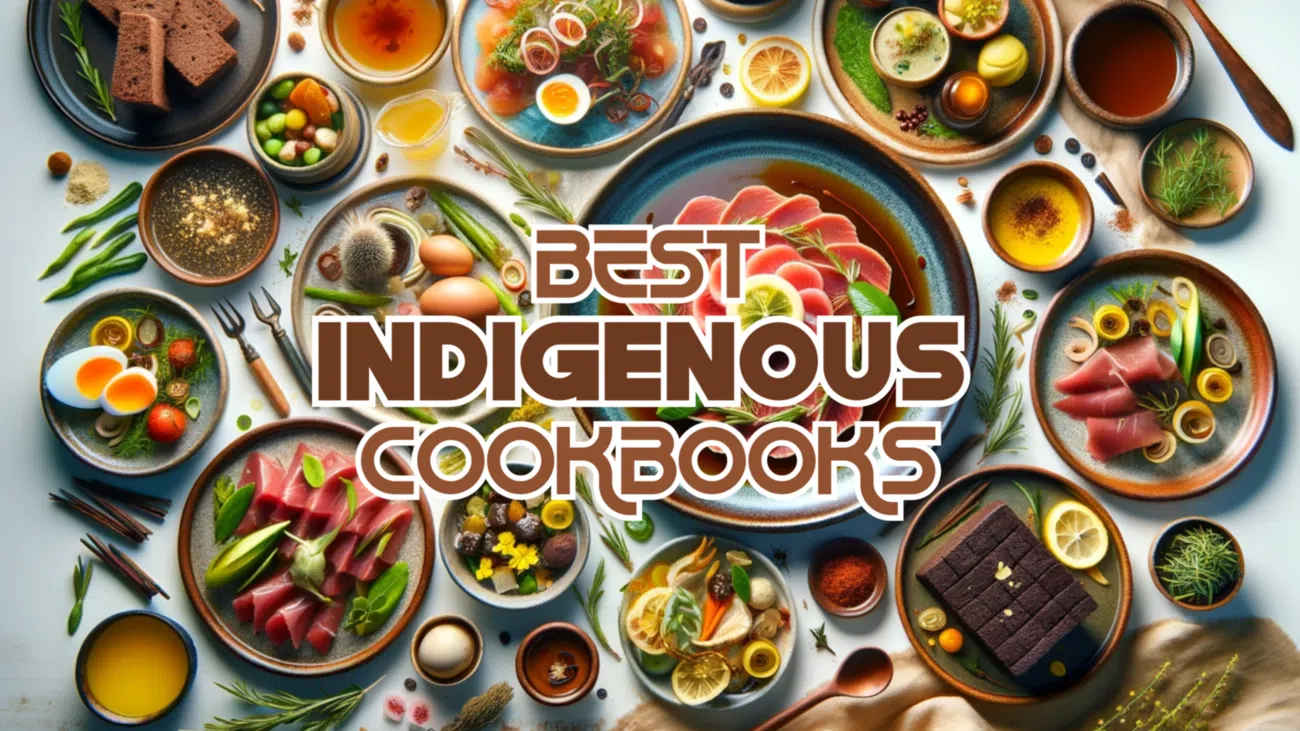





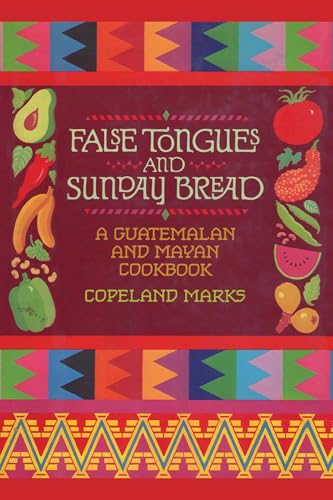










![The Basque Book: A Love Letter in Recipes from the Kitchen of Txikito [A Cookbook]](https://m.media-amazon.com/images/I/51+tpd2zFQL.jpg)




![In Bibi's Kitchen: The Recipes and Stories of Grandmothers from the Eight African Countries that Touch the Indian Ocean [A Cookbook]](https://m.media-amazon.com/images/I/517oxKzLlNL.jpg)

